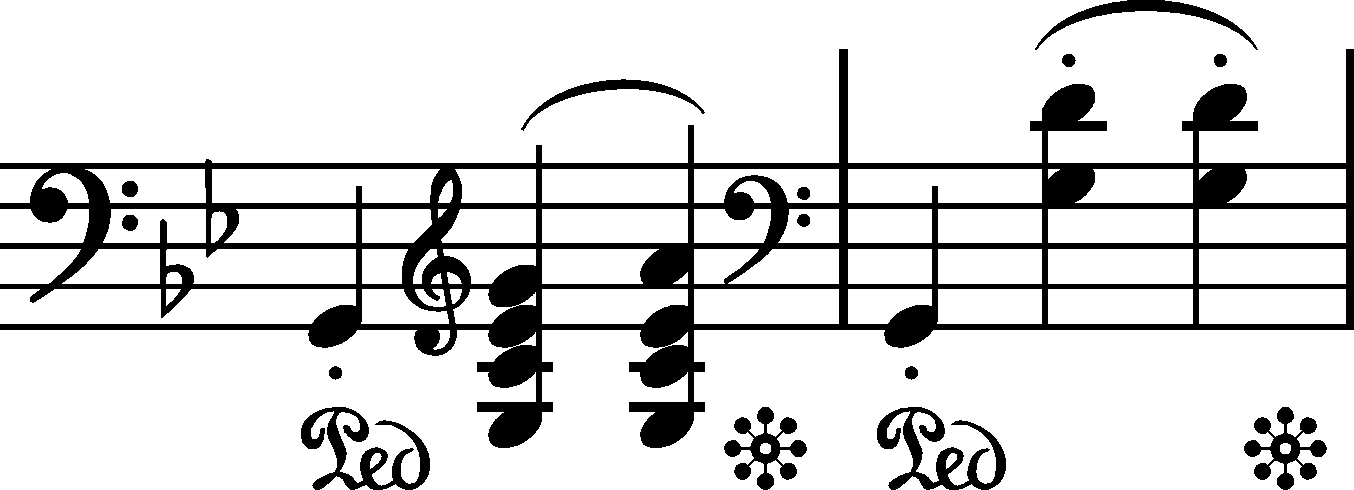



|
b. 3-4
|
composition: Op. 24 No. 1, Mazurka in G minor
..
In EE, the upper slur in those bars was omitted, probably by mistake. category imprint: Differences between sources issues: Errors in EE |
|||||
|
b. 3
|
composition: Op. 24 No. 1, Mazurka in G minor
..
In GE2 (→GE3) a cautionary category imprint: Differences between sources issues: GE revisions , Cautionary accidentals |
|||||
|
b. 3-4
|
composition: Op. 24 No. 1, Mazurka in G minor
..
Visible in A is the erased original version of the accompaniment, in which both bars had G crotchet with a staccato dot falling on the 1st beat. Both bars also had pedalling analogous to the pedalling preserved in adjoining bars. The notation before the change was as follows:
category imprint: Corrections & alterations; Source & stylistic information issues: Corrections in A , Accompaniment changes |
|||||
|
b. 3
|
composition: Op. 24 No. 4, Mazurka in B♭ minor
..
A category imprint: Editorial revisions; Source & stylistic information issues: Errors of A , Last key signature sign |
|||||
|
b. 3
|
composition: Op. 24 No. 3, Mazurka in A♭ major
category imprint: Differences between sources; Corrections & alterations |



 was added before a1 on the last chord. That unjustified revision was probably done to imitate Chopin's signs in analogous bars
was added before a1 on the last chord. That unjustified revision was probably done to imitate Chopin's signs in analogous bars 
 1 to g1 is missing from all the sources. The use of g1 between f
1 to g1 is missing from all the sources. The use of g1 between f 1 and g
1 and g
